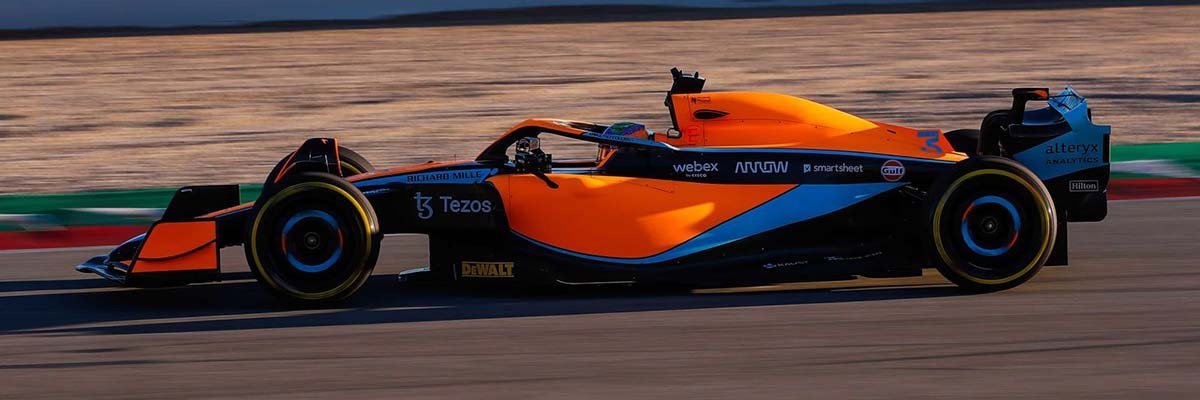The Formula 1 (F1) teams at had a two-week break before heading to Circuit de Spa-Francorchamps (Spa) for the Belgium Grand Prix, but there is little time to apply the brakes during the hectic 24 race season given the constant tweaking of the F1 cars.
Dan Keyworth, director of business technology at McLaren Racing, says: “We’re super busy right now.”
This was the first break for a while, and the team had a successful Belgium race which saw Oscar Piastri win, and teammate Lando Norris take second place. Spa also saw a new McLaren technology sponsor, Freshworks (see The attraction of Formula 1 to tech leaders).
Keyworth’s role involves running the tech at the sharp end of racing, all the IT infrastructure that must be deployed to the races and the IT that keeps the business of McLaren Racing on track.
The IT that needs to be shipped with cars and teams to every track is fundamental to car and driver performance. The teams used to have the financial luxury of taking a third, spare car to a race. But these days, the tech running the McLaren garage, known as the trackside rig, is rather like the third, backup car. The garage and must be put together and connected to the comms network at every F1 race event.
“It’s a mini datacentre that comes with us everywhere. It’s the brain of the garage. We build the garage from scratch,” Keyworth says, adding that the garage is initially “quite dumb”. “It’s got no power, no technology. My team turns up and we run 3.5 km of cabling. But the technology equipment doesn’t arrive until a day before we do our comms check.”
Once it is fully operational, the team is ready to race. “When you plug the trackside rig in, suddenly it all comes to life and you’re ready to go racing,” says Keyworth.
Without the trackside rig, he says the cars will not leave the garage, which makes IT very tangible and very visible to McLaren Racing.
The IT pace to race
Keyworth says 90% of the car is changed throughout the season, which demonstrates the relentless innovation of the sport: “If you think about how we deploy upgrades to the car, we’re designing the car, then we build it, then we take it to the race track and we use the free practices for testing new parts for a future race.” The testing provides data points, which, he says, enables the team to gain confidence.
IT is foundational at McLaren Racing, and, as a business, it has 1,400 employees globally. The IT must keep pace with the innovation being made to the race cars and the IT during the F1 season. This is a very different situation to many businesses that are more risk-adverse regarding the deployment of technology changes during a critical business process.

“The technology can’t stand still. If it did, it would effectively end up going backwards,” Keyworth adds.
Using simulations in the digital world or in a test scenario and then looking at how it gets deployed in the real world occurs both with car development and in IT. Keyworth says this provides assurance and a reference point as to whether something is worth pursuing, since new IT capabilities ultimately contribute to driving down lap times.
“It’s not in our nature to wait until the off-season,” he adds. “We like to move at the same pace as we change the Formula 1 car. We need to make sure we’re giving people a solid IT service. Every time that we lose a second in a technology problem, there’s potentially an impact on the lap time, so our ability to respond, to react and to spot trends is a big thing for us.”
IT service management (ITSM) works like a lubricant that enables a fast-paced organisation such as McLaren Racing to avoid stalling. “What you can’t escape from, even in a business that moves relentlessly, is having good prioritisation and good order,” adds Keyworth. “A really robust ITSM system underpins all that activity.”
Along with handling day-to-day IT issues, he says, ITSM helps the IT teams to tackle persistent problems: “I’ve worked in service management for a long time, and this is always your secret weapon.”
Keyworth says McLaren is a traditional machine learning house. In racing, he says: “We generate 1.5 Tbytes of data every weekend from the race cars. It’s 250 million data points per car, and the human brain simply can’t analyse that or detect anomalies. Traditional machine learning techniques have always been part of our toolbox.”
Today, generative AI (GenAI), such as the Freddy AI tool built into Freshworks, turbochanges access to insights. In the case of ITSM, he says: “In the IT operations team, you’re trying to ‘spot friends’. You want to see other related tickets either from the same user or other users.” This, he says, helps IT to start building and understanding of issues in the IT estate.
Keyworth feels that when natural language AI capabilities are used in ITSM to respond to helpdesk tickets, the structure of the response is consistent. “The sport [Formula 1] is all about consistency,” he says.
The more McLaren Racing’s IT team can consistently deliver an IT service in the same way to every person in the organisation, the more efficient the business becomes. And given his job title as business technology director, and the fact that technology is foundational for the business and the team, Keyworth knows that IT plays crucial role in ensuring the McLaren Formula 1 race cars are at peak performance on the track.




